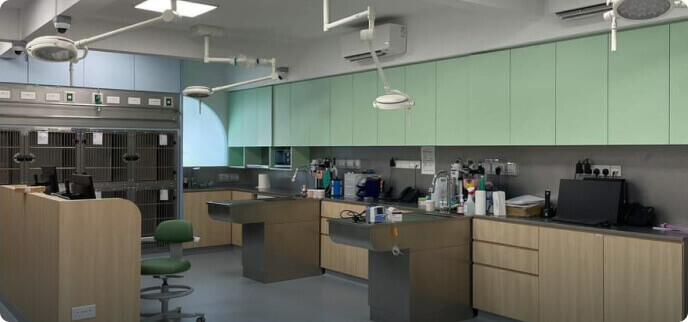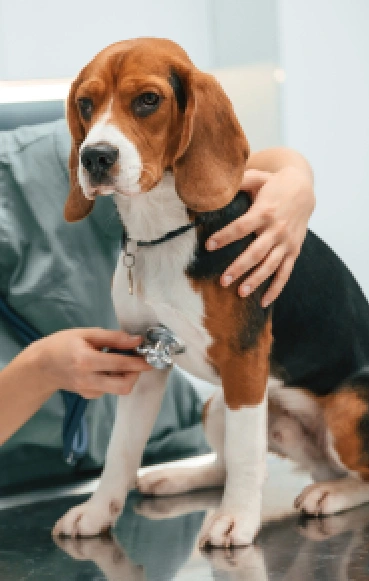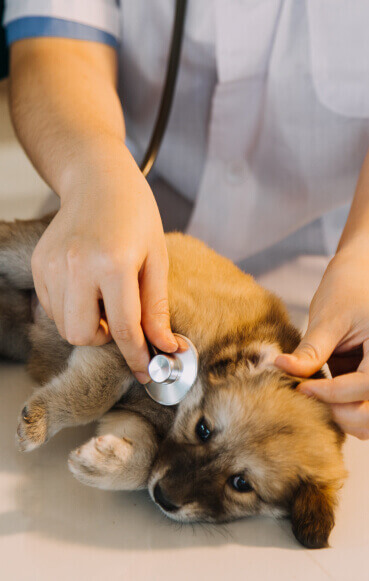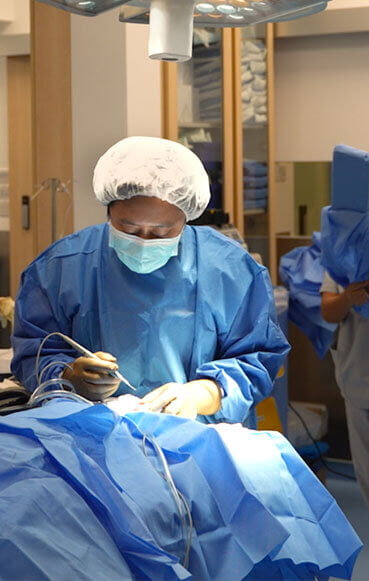A Transcatheter Edge-to-Edge Repair (TEER) procedure is a minimally invasive procedure
designed to treat degenerative mitral valve disease in pets. It is most commonly used
for dogs in stage B2 or early stage C of the disease. Mitral valve disease, also known
as mitral valve regurgitation, is a common cardiac condition in small to medium-sized
breeds, where the mitral valve fails to close properly, allowing blood to flow backwards
through the heart.
What should pet owners expect before, during and after TEER treatment? Whether you are
considering this procedure or your pet is already scheduled, this guide outlines the key
information you need to feel well-prepared and informed every step of the way.
Before the Procedure
As with any medical situation, TEER begins with identifying symptoms that may indicate
cardiac disease. Pet owners may notice unusual fatigue, shortness of breath or fainting,
which are red flags for heart issues. These symptoms necessitate a thorough cardiac
evaluation.
A vet cardiologist may order one or more of the following diagnostic tests to assess the
condition of the mitral valve and determine suitability for TEER:
- Echocardiogram: This test provides detailed images of the heart's structure and valve function.
- Transoesophageal Echocardiogram (TEE): Using an oesophageal probe, this test provides a better view of the mitral valve.
- MRI: Some cases may require an MRI scan to provide additional anatomical and functional insights.
Day of the Procedure
Upon arrival at the clinic, the veterinary team will conduct a final preoperative check
to evaluate your pet's stability. This includes reviewing their vital signs and
verifying that all pre-procedure instructions have been followed. General anaesthesia is
then administered to help the pet remain still and pain-free.
During the TEER procedure, the vet surgeon makes a small incision between the ribs to
access the heart. Subsequently, a catheter is placed directly into the heart, and a
V-Clamp device is passed through the catheter to repair the mitral valve. This device is
guided using transesophageal echocardiography (TEE) and fluoroscopy for precise device
placement and effective repair.
Depending on the complexity of the case, the TEER procedure generally takes between 90
minutes and 3 hours to complete, including anaesthetic time and device positioning.
After the Procedure
Following the procedure, the pet is closely monitored in a recovery room, with vital
signs like heart rate and oxygen levels tracked continuously. Most pets stay in the
hospital for one to three days to manage any immediate post-operative complications and
ensure a stable recovery. It is normal for pets to experience mild discomfort or
temporary lethargy.
Once discharged, pet owners will receive postoperative care instructions to prevent
undue strain and complications on the pet’s heart. These include:
- Wound Care and Monitoring: The surgical site must be kept clean and dry, with owners watching for infection signs like redness, swelling or discharge, and reporting concerns to the vet.
- Follow-Up Appointments: Regular follow-ups are recommended at two weeks, one month, three months, and six months post-operation to monitor heart function and ensure the repair remains effective.
- Medication Adherence and Supportive Care: Continued medications, such as heart support drugs, are often necessary, and following the vet’s plan is essential for long-term management.
- Cardiac Rehab Programme: Some pets may benefit from structured cardiac rehabilitation to gradually return to normal activity. This process, guided by veterinary recommendations, can also help improve overall heart health.
If you are considering a TEER procedure for your pet, reach out to a trusted vet clinic
in Singapore to discuss suitability and expectations. At Advanced Vetcare Centre, we
offer comprehensive evaluations and specialised surgeries, including the TEER procedure,
to help pets live longer and more comfortably.
For immediate assistance or any pet emergency concerns, schedule a consultation
with our experienced veterinary surgeon in Singapore today.

Bedok (24 Hrs Vet Clinic)
26 Jln Pari Burong, Picardy Gardens, Singapore 488692 (Shophouse along Upper Changi Road)
Operating Hours: 24 Hours Daily
Balestier (Vet Clinic)
564A Balestier Road, Singapore 329880
Opening Hours: 9am - 9pm Daily Closed on Tuesday & Public Holidays







